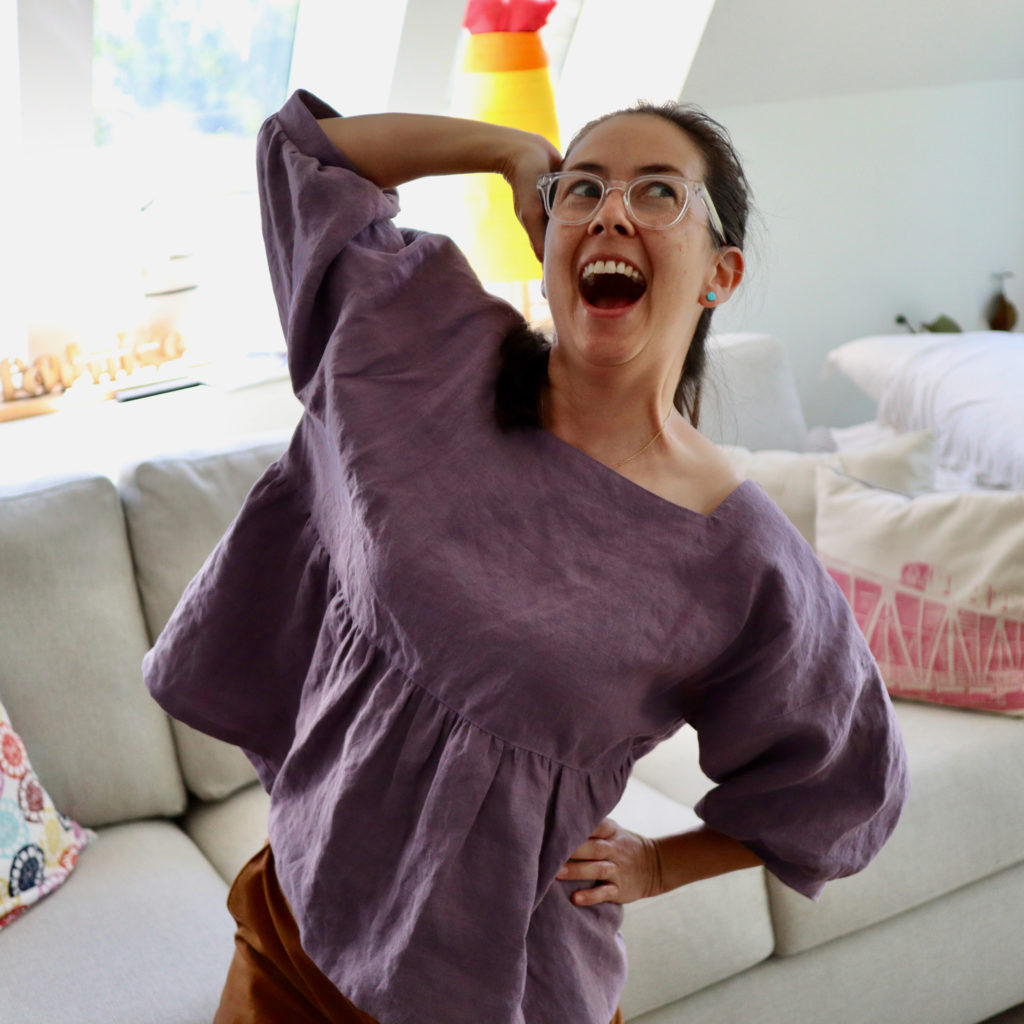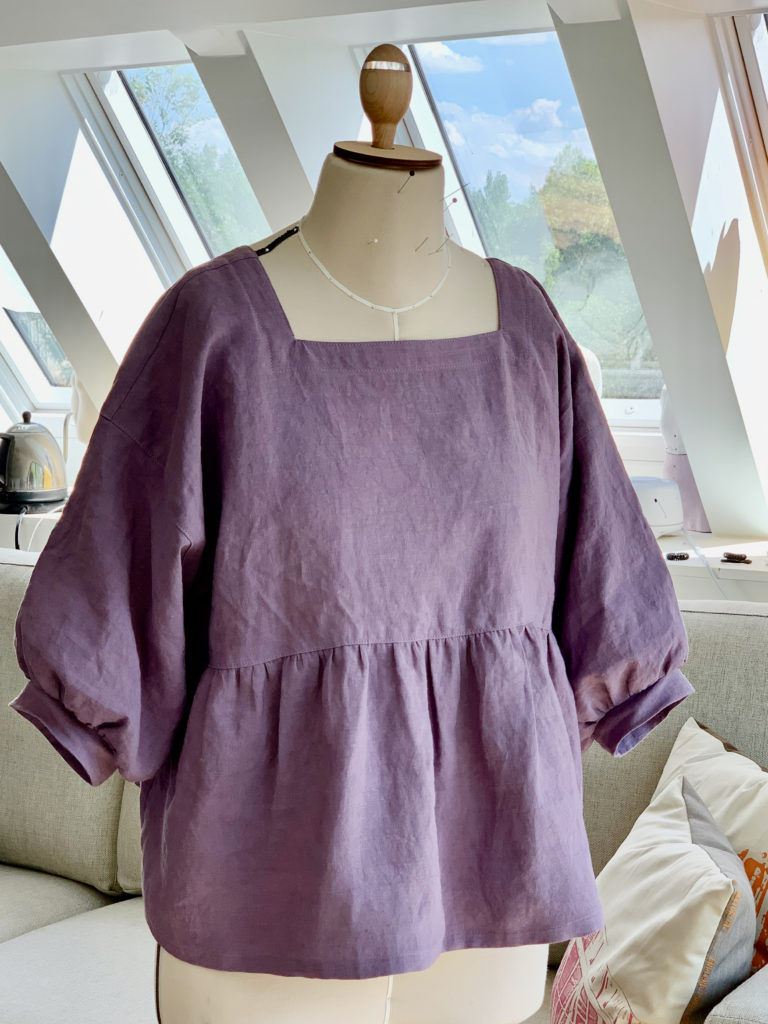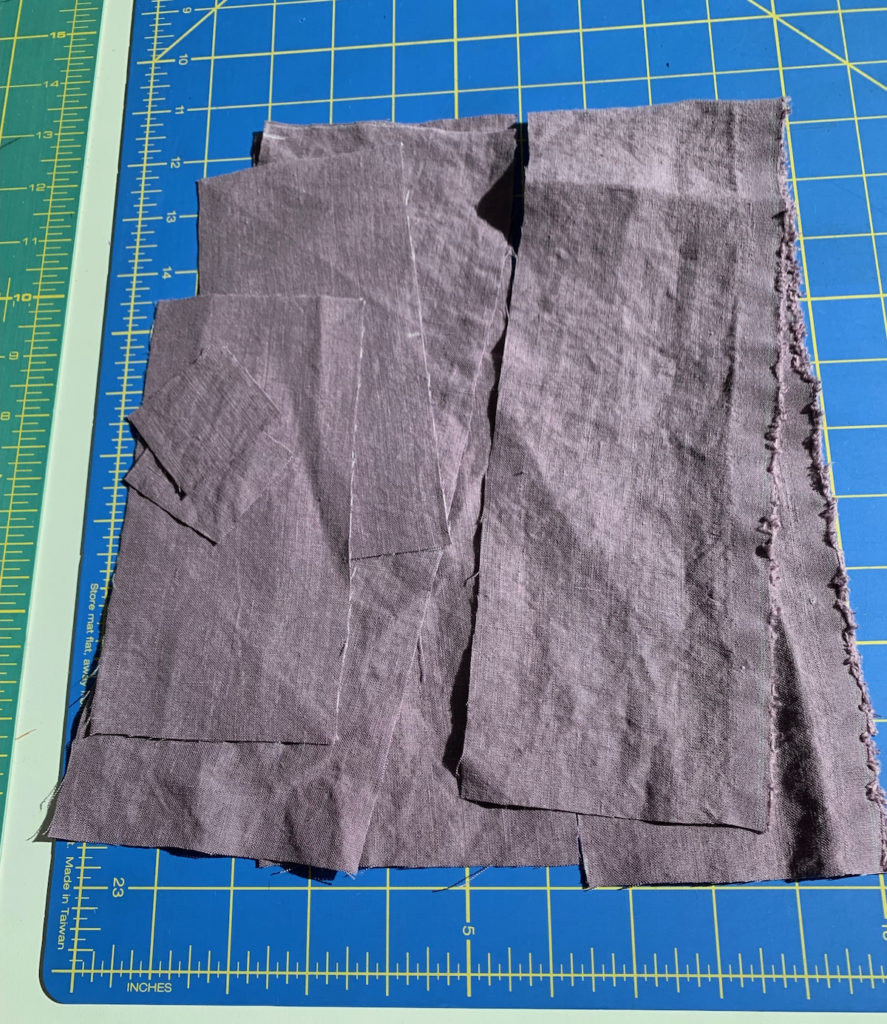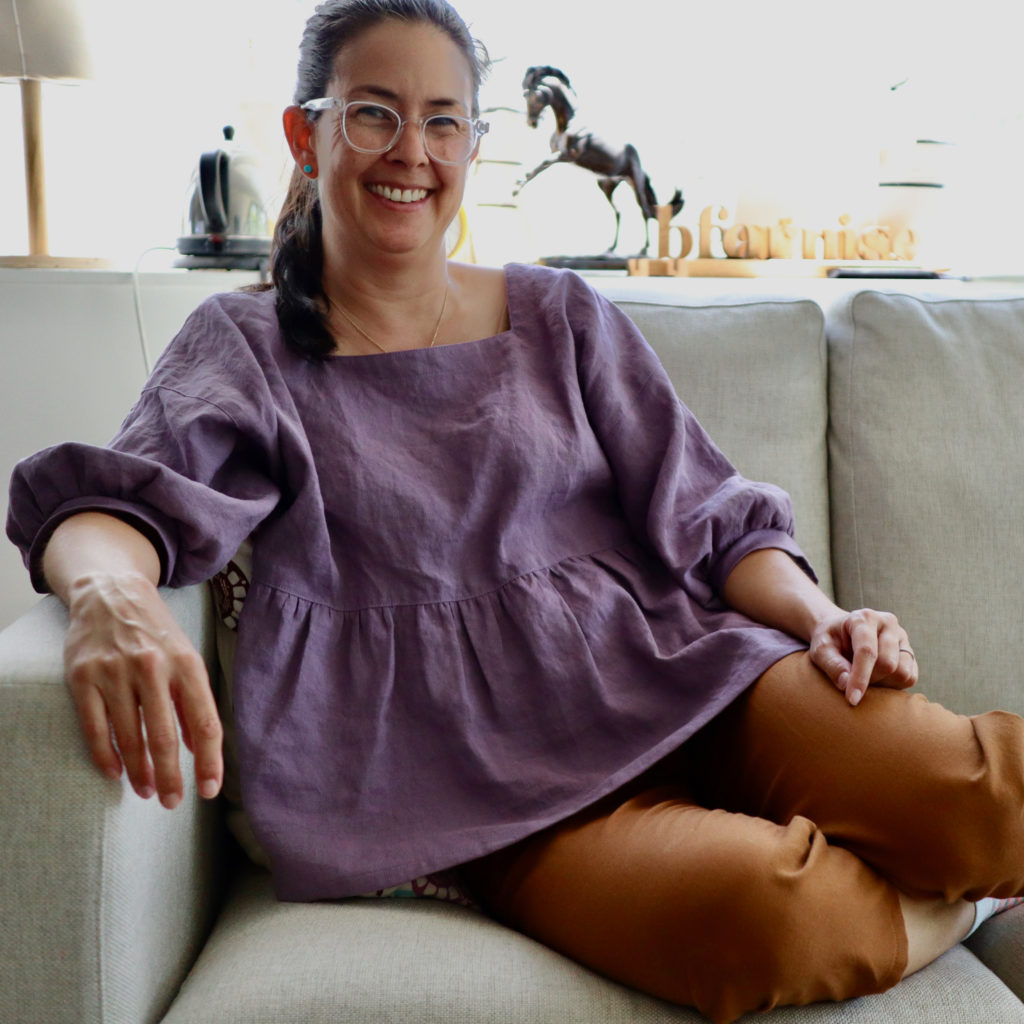
I am a goofball. Thanks for bearing with me! But seriously, the fun fit of this billowy garment makes me giddy 🙌
Because I make custom dress forms, I’m usually in the mindset of making more structured and silhouette-following garments. But lately, I’ve been curious about abandoning that approach altogether in the name of zero waste fashion.
What’s great about zero waste garment making is obviously less garbage making. But what I’ve also discovered is that zero waste patterns can be a satisfying quick make that pushes the envelope in terms of your personal fit preferences and style.
This was certainly the case for me when I made Cris Wood’s Daydream Top. I had this dark lavender slubby hemp fabric that I’d been stashing for some coveralls, but really needed a quick sewing fix asap. How about matching separates in the same fabric instead? For the top, I found this awesome pattern that I could make out of rectangles! Let’s do it!!

What you do is take a few measurements, pop them into the pattern‘s handy worksheet, and voilà – custom rectangle pieces. I don’t think the cutting process went any faster than when you print out a pdf pattern (you have to double check your measurements constantly, make sure it’s square, etc.) but it sure does save on paper and ink.

Here is what I ended up in terms of waste. I would say this is very close to zero since I used several of the small scraps for my construction experiments.
Cris Wood does a great job with her instructions. You will motor through this simple style. I made one adjustment during construction – shortening the bodice for my short-waisted torso. I added more top-stitching than in the pattern because I think it looks more finished that way (and less “homemade” if you know what I mean). Oh man, buckle up for MILES of gathering. Wow.
Word of warning: don’t try to get fancy like me and skip the double finishing on each bodice piece at the side seams and top of the sleeve. Follow her instructions instead to get a clean right angle junction at the sleeve. I wish pattern makers would explain some of their construction choices so I don’t have to do experiments to understand why they didn’t do it the standard way. Luckily, I have been burned enough times to do those experiments on scraps so no significant time or fabric was wasted.

This was the first time I ever sewed hemp and it’s a bit like linen with a stiff hand. This particular weight of fabric is heavy enough for pants so it’s even more stiff. I do really appreciate how it holds the volume for this style.
That’s it. Stay tuned for some matching pants!
Have you tried any zero waste patterns? How did it go?
